The Happymodel EP1 is the first ELRS-enabled true diversity radio receiver. It aims to provide the best range even in difficult conditions. Happymodel EP1 has two antennas and two radio modules for doubling the signal quality. In theory, “Diversity” uses at the time only one antenna by toggling to the antenna that has the strongest signal. The EP1 uses “Enhanced-Diversity” by mixing the power of both antennas at the same time. You should not expect a double range but a much more stable one.
ExpressLRS aka ELRS focus to provide the best completely open, high-refresh radio control link while maintaining a maximum achievable range at that rate with low latency. Despite that, the first ELRS-compatible devices started to arrive in 2021, the protocol evolved to generation V3. Each major release introduced new features and more stable operations.
Personally, I migrated most of my drones from FlySky and FrSky to ExpressLRS. The only inconvenience of ELRS is that you need to keep all your hardware at the same major ELRS release. For example, if flash the latest ELRS V3 firmware on your transmitter you also need to upgrade all your drones (radio receivers RX).
Happymodel EP1 Dual ELRS RX review
Disclosure: I received this ELRS radio receiver as part of a product review collaboration with HappyModel. Product specs and quality may vary according to the manufacturer’s reliability, so I cannot guarantee that you will get an RX that performs the same as seen in my article.
The EP1 comes in a nylon bag with two antennas and a heat shrink wrap. There are no wires included in the kit. Happymodel also packs bonus stickers with two of their popular drones. The board measures just 19 x 14 x 2.6mm and weighs 2.3grams with the antennas. By comparison, a standard ELRS receiver with an onboard ceramic flat antenna measures 10x10x3 and weighs less than 1g.
It has not just antenna connectors (IPEX MHF 1/U.FL type) but also two radio ICs. Practically there are two RX modules on a single board. On the front, there is also a bright status LED and a “Boot” micro button. On the back, there is a single ESP32-PICO-D4 Dual-Core MCU with built-in 4MB flash and Wi-Fi connectivity. There are four soldering pads with the following pin layout (left to right): RX, TX, 5V, and GND.
Technical specifications
- ESP32 PICO D4 – Dual SX1280 (SX1281)
- Antenna connector: IPEX MHF 1/U.FL
- RF Frequency: 2.4GHz (2400~2480MHz)
- Telemetry power: >19dbm
- Receiver protocol: CRSF
- Input voltage: +5V DC @ “+” pad
- Firmware: ExpressLRS v3.0.0 rc1 or latest version (target: Unified_ESP32_2400_RX, Append configuration -Generic ESP32 2.4Ghz Diversity RX)
- Software upgrade via UART or WIFI
- PCB size: 19mm x 14mm
- Weight: 1gram excluding antenna
Wiring, configuration, and firmware upgrade
As I previously mentioned, the HM EP1 comes just with soldering pads, without wires. Wiring to the flight controller (FC) is very easy, you just need to remember that receiver-RX goes to the FC-TX respectively receiver-TX to FC-RX. One more important thing, the radio board requires to be powered with 5 volts, so you should not connect it directly to the battery pads. In order to prevent any short circuits, it is important to use the included heat shrink wrap.
In the BetaFlight configurator, in the Ports tab, you need to set the appropriate UART port to ‘Seria Rx’, respectively in the Receiver tab, Receiver Mode to ‘Serial (Via UART)’ and the Serial Receiver Provider to ‘CRSF’.
Being a new RX model is not yet compatible with the ELRS Configurator so doesn’t show in the list of target devices. Instead, you can access the Happymodel EP1 Dual ELRS via WiFi. In the configuration web interface there are four main sections without any specific settings for the Diversity operation mode:
- Options
- Binding phrase
- UID
- WiFi “Auto On” interval
- UART Baud
- Invert TX
- Lock on first connections
- WiFi
- Access Pont mode
- WiFi SSID
- WiFi Password
- Model
- Model match (0-63)
- Force telemetry off
- Update update
To take advantage of the DIVERSITY antenna system, it is recommended to install the antennas in different positions. I opted to mount one in front and the other on the back, this way regardless of the position of the drone you will have the same signal power. You can play also with polarization by installing one T-antenna vertically and one horizontally.
Price and availability
The Happymodel EP1 can be ordered starting on September 1 from the most reputable FPV accessories stores including Banggood. The retail price is $29.99 and includes two antennas. For smaller builds, Happymodel also has a NANO RX board priced at only $16.99.

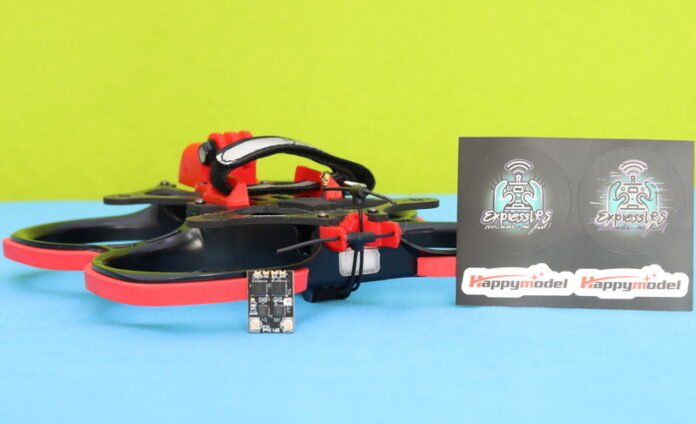
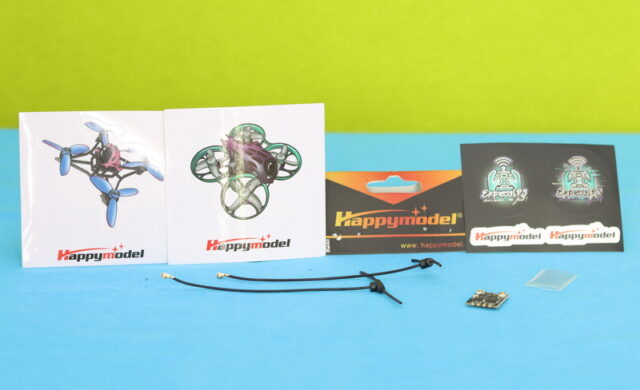

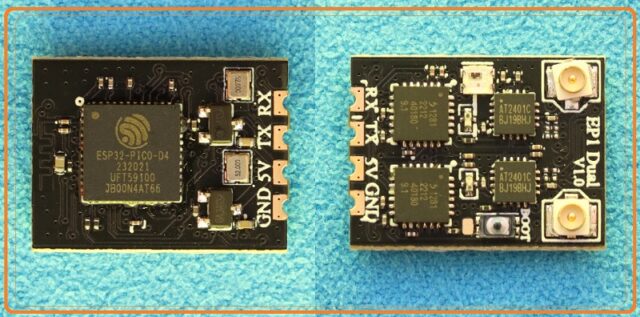
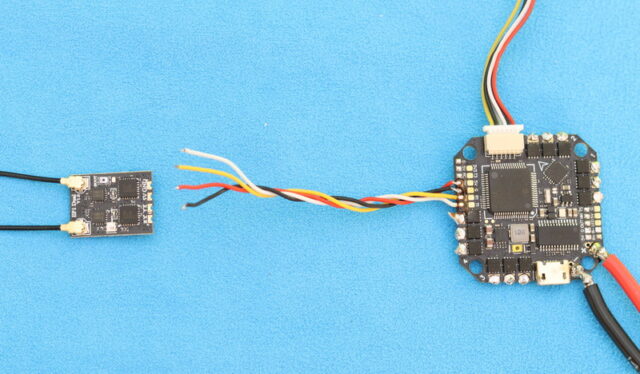
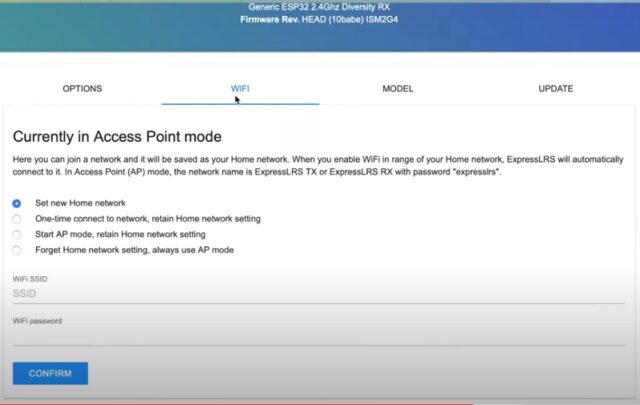
Expected range with 1W TX?
that second antenna comes with extra range or just improved signal stability?
I’m building a long-range GPS-enabled FPV drone, and I will make a comparison between the EP1 Dual ELRS and the standard ELRS receiver.
This looks so promising. I’m working on a 7″ LR drone, this dual-ELRS looks perfect for the job.